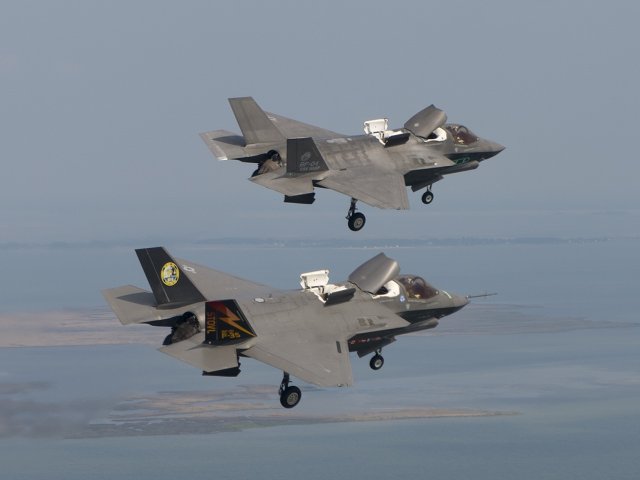Breaking news
F-35 Flight Test Program Milestones Maturing Combat Capabilities.
| a | |||||
| |
|||||
World
Aviation Defence and Security Industry News - Lockheed Martin |
|||||
| F-35 Flight Test Program Milestones Maturing Combat Capabilities | |||||
The
Lockheed Martin F-35
Joint Strike Fighter (JSF) program continued a steady path of flight test
milestones in August, including weapons separation, software compatibility
and flight hours, all demonstrating program maturity. |
|||||
 F-35B aircraft BF-1 and BF-4 fly together in Mode 4 formation near NAS Patuxent River |
|||||
| “The
test milestones are a direct result of the detailed planning, coordination
and execution between various government teams and the integrated test
force,” said J.D. McFarlan, Lockheed Martin's Vice President for
F-35 Test & Verification. “Every testing milestone demonstrates
the development of the F-35 in successive steps toward enabling the U.S.
Marine Corps to attain its F-35B
Initial Operational Capacity (IOC) next year.” |
|||||
 F-35B aircraft BF-3, piloted by USMC Maj Michael Kingen, fires an AIM-120 Advanced Medium Range Air-to-Air Missile (AMRAAM) in the first live fire test from NAS Patuxent River |
|||||
F-35B aircraft BF-1 and BF-4 completed “Mode 4” formation testing on Aug 9th, as required for Block 2B software capability. “In Mode 4 operations, the STOVL Propulsion System is engaged, the lift fan, roll post nozzle, and three-bearing-swivel nozzle are operating, and all propulsion system doors and inlets are open. Flight testing validated the F-35B Short Take Off and Vertical Landing (STOVL) variant’s ability to operate well in this configuration during formation flight which supports operations around the ship; a key milestone for the F-35B path to IOC,” McFarlan said. F-35B aircraft BF-3 completed the 2B software fleet release weapon separation requirements for the F-35B with two successful AIM-120 Advanced Medium Range Air-to-Air Missile (AMRAAM) Air Vehicle Instrumented (AAVI) separation flights on consecutive days, Aug. 14 and 15. The AIM-120 radar-guided missiles were launched over the Atlantic Test Range. “2B software fleet release is critical to the warfighter because it delivers the first combat capability to our most dominant 5th generation platform. Weapons employment is one the most critical combat capabilities. This culminates years of dedicated work that proves safe separation in 2B configurations and provides this capability and confidence to our customers,” McFarlan said. |
|||||



















